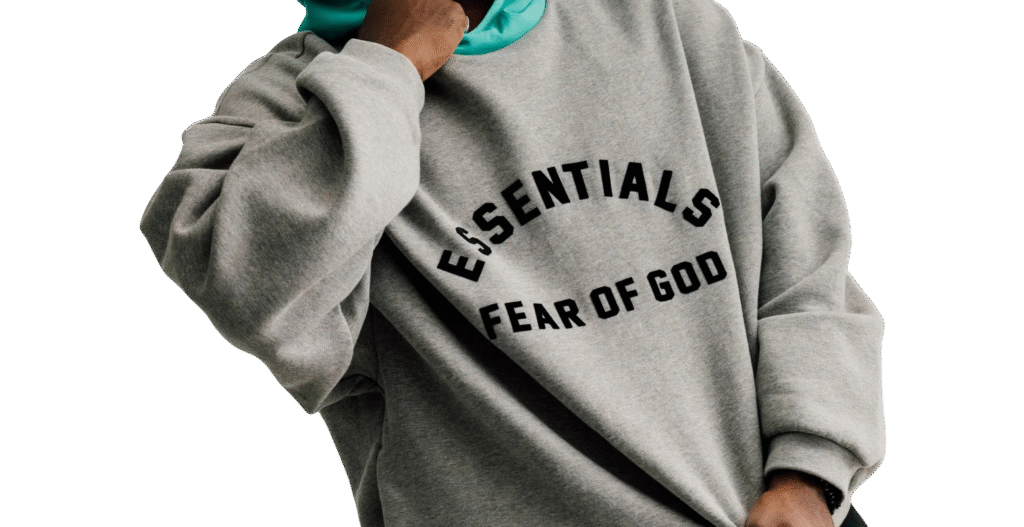In the world of fashion, few styles embody sophistication and timeless elegance quite like the tailored look. Defined by precision, structure, and a perfect fit, tailored clothing enhances your natural silhouette and projects confidence without saying a Essentials Clothing more than just wearing fitted clothes—it’s about embracing refinement, attention to detail, and an appreciation for craftsmanship.Whether you’re dressing for a corporate setting, a formal occasion, or simply aiming for everyday polish, mastering the tailored aesthetic elevates your wardrobe from ordinary to exceptional. Here’s a complete guide to the essential clothing for a tailored look, along with practical styling insights to help you perfect the art of modern tailoring.
1. Understanding the Tailored Look: Structure, Fit, and Balance
At its core, tailoring is the art of fit and proportion. The tailored look emphasizes clean lines and precision cuts that complement your body shape. Every seam, dart, and hem serves a purpose—enhancing form without sacrificing comfort.
Unlike slim or relaxed fits, tailoring focuses on structure rather than tightness. It creates definition in the shoulders, waist, and legs while maintaining smooth transitions between pieces. The result is an ensemble that looks effortlessly polished, exuding confidence and professionalism.
Tailored style isn’t limited to suits—it’s a mindset that can be applied to shirts, trousers, outerwear, and even casual pieces, giving your entire wardrobe a refined edge.
2. The Tailored Suit: The Cornerstone of Refinement
A well-tailored suit is the foundation of any tailored wardrobe. It’s a symbol of power, style, and self-assurance that transcends trends.
-
Blazer or Suit Jacket: The jacket should contour to your shoulders naturally, with a slight taper at the waist. The sleeves should end just above your wrist bone, revealing a hint of shirt cuff. Common lapel styles include notch (for versatility) and peak (for a more formal statement).
-
Trousers: Slim but not tight, tailored trousers elongate the leg and sit neatly at the waist. They should gently graze your shoes with a slight break or cropped hem for a contemporary touch.
-
Fabric Choices: Wool, wool-blends, and lightweight tweed are classic options that hold structure beautifully. For warmer months, linen and cotton suits offer breathable sophistication.
Neutral tones—navy, charcoal, gray, and beige—form the backbone of a versatile tailored wardrobe.
3. Tailored Shirts: Precision Meets Comfort
The tailored shirt is the unsung hero of the tailored look. Whether worn under a suit or on its own, it forms the base layer that ensures the entire ensemble looks sharp.
-
Fit: A tailored shirt should sit close to the body without pulling at the buttons. The shoulder seams should align perfectly with your shoulders, and the sleeves should taper slightly at the cuff.
-
Fabric: High-quality cotton or cotton blends with a bit of stretch ensure breathability and ease of movement. Poplin, twill, and oxford weaves are durable and timeless.
-
Style Details: Subtle touches—like spread collars, mother-of-pearl buttons, or French cuffs—add sophistication.
White and light blue are must-haves, while stripes or micro-checks add variety without straying from refinement.
4. Tailored Trousers: The Art of Sharp Simplicity
Tailored trousers are the backbone of the tailored aesthetic. They define posture, elongate the legs, and provide the foundation for balance in your outfit.
-
Flat-Front or Pleated: Flat-front trousers are sleek and modern, ideal for most body types. Pleated trousers add comfort and a touch of vintage flair.
-
Rise and Length: A mid-rise fit flatters most physiques, while the hem should gently touch the top of your shoes. Cropped lengths are popular for modern tailoring, showing off loafers or boots.
-
Fabric and Color: Wool blends, twill, and cotton sateen offer durability and drape. Stick to versatile colors like charcoal, navy, camel, and light gray.
When properly fitted, tailored trousers strike a balance between comfort and structure, ensuring your silhouette remains clean and composed.
5. Blazers and Sports Jackets: Versatile Tailoring Essentials
While the suit jacket is part of a set, blazers and sports jackets offer flexibility for both formal and smart-casual settings.
-
Blazers: Typically solid-colored with structured shoulders and a contoured waist. Pair with chinos, dress pants, or even dark denim for a polished, modern look.
-
Sports Jackets: Slightly more relaxed, often featuring patterns like houndstooth, windowpane, or plaid. They’re ideal for weekend events or business-casual settings.
The right jacket should move with you while maintaining its form—a mark of true tailoring craftsmanship.
6. Outerwear: The Tailored Layer
Outerwear completes the tailored ensemble while protecting it from the elements. Well-chosen coats and jackets preserve your clean silhouette even in colder months.
-
Trench Coats: Classic and versatile, trench coats are lightweight yet structured. Belted waists emphasize a tailored profile.
-
Overcoats: Wool or cashmere overcoats drape elegantly over suits and blazers, maintaining a streamlined shape. Camel, navy, and charcoal are timeless colors.
-
Peacoats: A double-breasted peacoat offers military-inspired sophistication with a close fit through the torso.
These outer layers ensure that your tailored aesthetic remains intact, even when dressing for warmth.
7. Tailored Knitwear: Soft Structure
Tailoring isn’t limited to woven fabrics—knitwear can also complement a refined wardrobe.
-
Fine-Gauge Sweaters: Lightweight merino wool or cashmere sweaters layer perfectly under blazers or over shirts without adding bulk.
-
Cardigans: Slim, button-up cardigans provide flexibility for transitional weather.
-
Turtlenecks: A fitted turtleneck under a blazer replaces the classic shirt-and-tie combo for a modern, minimalist twist.
These pieces add warmth and texture while maintaining the structured aesthetic of tailored dressing.
8. Tailored Footwear: Polishing the Look
Shoes are the exclamation point of a tailored outfit. They ground your ensemble and complete the image of refined sophistication.
-
Oxfords and Derbies: The quintessential dress shoes for formal tailoring. Black or brown leather pairs effortlessly with suits and trousers.
-
Loafers: Sleek and versatile, ideal for business-casual or evening wear. Penny or tassel loafers in leather or suede bring an element of relaxed elegance.
-
Chelsea Boots: Streamlined and stylish, perfect for pairing with tailored trousers or cropped pants.
-
Brogues or Monk Straps: Add character and craftsmanship detail to classic tailoring.
Always ensure your footwear is polished and well-maintained—clean shoes are as essential to a tailored look as a good fit.
9. Accessories: Subtle Refinement
Accessories in tailored dressing should enhance the outfit, not overpower it. The goal is subtle sophistication.
-
Belts: Match the belt color with your shoes for a cohesive finish. A slim leather belt adds structure without distraction.
-
Ties and Pocket Squares: These elements introduce color and personality. Choose silk or linen in complementary tones and avoid overly loud patterns.
-
Watches: A sleek, minimalist timepiece complements the precision of tailored wear.
-
Bags: Structured leather briefcases or minimalist crossbody bags reinforce the polished aesthetic.
Every detail should serve a purpose—function and form in perfect balance.
10. Tailoring Beyond Formalwear: The Modern Approach
Contemporary tailoring extends beyond the boardroom. Today’s tailored pieces integrate seamlessly into casual and smart-casual wardrobes.
-
Pair tailored trousers with crisp sneakers and a knit polo.
-
Layer blazers over T-shirts for an elevated yet relaxed ensemble.
-
Mix soft fabrics like jersey or tencel with structured pieces for a modern contrast.
This evolution of tailoring embraces versatility—proof that structure and comfort can coexist beautifully.
11. The Power of Fit and Confidence
Ultimately, the tailored look is about empowerment through precision. Clothes that fit perfectly don’t just flatter your body—they elevate your presence. Tailoring communicates discipline, care, and attention to detail.
The true secret of tailored dressing isn’t the price tag or the label—it’s the fit. Even affordable garments can look luxurious when they fit correctly. Consider investing in alterations; a minor adjustment in the waist, sleeve, or hem can transform an outfit entirely.
Conclusion
The tailored look is timeless Essentials Hoodie because it transcends trends—it’s a celebration of craftsmanship, discipline, and confidence. With core essentials like structured suits, crisp shirts, refined outerwear, and well-chosen accessories, you can curate a wardrobe that speaks elegance in every detail.
Tailored dressing isn’t about formality—it’s about presence. It’s about wearing clothes that align perfectly with who you are and how you want to be perceived: confident, composed, and undeniably refined.
In a world of fleeting trends, tailoring stands as the gold standard of enduring style—a reminder that fit, quality, and confidence never go out of fashion.



